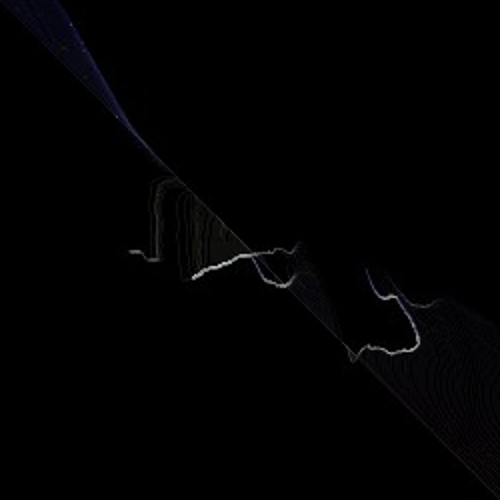

我正在将处理脚本重新输入python,以便在gimp-python脚本中使用它。我在strokeWeight(0.3)上遇到问题,这意味着厚度小于1像素。
我遵循了将rgb颜色与alpha混合的建议,但这并不起作用。似乎处理正在做其他事情。我试图在处理源代码中查找strokeWeight函数,但我无法真正理解它。我还试图将strokeWeight为1的颜色值与strokeWeight为0.3的颜色值进行比较,但我也无法理解它。
有人知道当将strokeWeight设置为0.3时,处理会做什么吗?
我使用的脚本是:
String filename = "image2";
String fileext = ".jpg";
String foldername = "./";
// run, after 30 iterations result will be saved automatically
// or press SPACE
int max_display_size = 800; // viewing window size (regardless image size)
/////////////////////////////////////
int n=2000;
float [] cx=new float[n];
float [] cy=new float[n];
PImage img;
int len;
// working buffer
PGraphics buffer;
String sessionid;
void setup() {
sessionid = hex((int)random(0xffff),4);
img = loadImage(foldername+filename+fileext);
buffer = createGraphics(img.width, img.height);
buffer.beginDraw();
//buffer.noFill();
//buffer.smooth(8);
//buffer.strokeWeight(1);
buffer.strokeWeight(0.3);
buffer.background(0);
buffer.endDraw();
size(300,300);
len = (img.width<img.height?img.width:img.height)/6;
background(0);
for (int i=0; i<n; i++) {
cx[i] = i; // changed to a none random number for testing
cy[i] = i;
//for (int i=0;i<n;i++) {
// cx[i]=random(img.width);
// cy[i]=random(img.height);
}
}
int tick = 0;
void draw() {
buffer.beginDraw();
for (int i=1;i<n;i++) {
color c = img.get((int)cx[i], (int)cy[i]);
buffer.stroke(c);
buffer.point(cx[i], cy[i]);
// you can choose channels: red(c), blue(c), green(c), hue(c), saturation(c) or brightness(c)
cy[i]+=sin(map(hue(c),0,255,0,TWO_PI));
cx[i]+=cos(map(hue(c),0,255,0,TWO_PI));
}
if (frameCount>len) {
frameCount=0;
println("iteration: " + tick++);
//for (int i=0;i<n;i++) {
// cx[i]=random(img.width);
// cy[i]=random(img.height);
for (int i=0; i<n; i++) {
cx[i] = i; // changed to a none random number for testing
cy[i] = i;
}
}
buffer.endDraw();
if(tick == 30) keyPressed();
image(buffer,0,0,width,height);
}
void keyPressed() {
buffer.save(foldername + filename + "/res_" + sessionid + hex((int)random(0xffff),4)+"_"+filename+fileext);
println("image saved");
}

0.3像素的笔画权重意味着像素的3/10将被着色(*),因此,假设路径穿过中间的像素,像素将被绘制为3/10不透明度(可能会对线性/感知进行一些调整)。
(*)当然,如果路径靠近像素的边缘,这可能会少一点,并且相邻像素也会稍微着色。
基于许多评论,目标似乎是使用基本算法对像素进行采样并合成新图像来生成9000x9000图像。
该算法的工作原理如下:
sin()/cos()函数现有的处理脚本可以很容易地适应输出9000x9000图像。在输入图像较小的情况下,可以重新映射坐标:
float remappedX = map(cx[i],0,input.width,0,output.width);
float remappedY = map(cy[i],0,input.height,0,output.height);
以下是发布在顶部的处理草图的修改版本:
String filename = "image2";
String fileext = ".jpg";
String foldername = "./";
// run, after 30 iterations result will be saved automatically
// or press SPACE
/////////////////////////////////////
// number of pixels to sample
int n = 2000;
float[] cx;
float[] cy;
PImage img;
int len;
// working buffer
PGraphics buffer;
// buffer size
int bufferWidth = 9000;
int bufferHeight = 9000;
String sessionid;
int tick = 0;
boolean imageAutoSaved = false;
void setup() {
size(300,300);
background(0);
// load image, setup session
sessionid = hex((int)random(0xffff),4);
img = loadImage(foldername+filename+fileext);
len = (img.width<img.height?img.width:img.height)/6;
// sample each pixel
n = img.pixels.length;
cx = new float[n];
cy = new float[n];
resetPixelSampling();
// setup buffer
buffer = createGraphics(bufferWidth,bufferHeight);
buffer.beginDraw();
//buffer.noFill();
//buffer.smooth(8);
//buffer.strokeWeight(1);
buffer.strokeWeight(0.3);
buffer.background(0);
buffer.endDraw();
}
void resetPixelSampling(){
for (int i=0; i < n; i++) {
//cx[i] = i; // changed to a none random number for testing
//cy[i] = i;
cx[i] = random(img.width);
cy[i] = random(img.height);
}
}
void updatePixelSampling(){
buffer.beginDraw();
for (int i = 1; i < n; i++) {
color c = img.get((int)cx[i], (int)cy[i]);
buffer.stroke(c);
// remap/re-scale coordinates from sampled image to target buffer size
float bufferX = map(cx[i],0,img.width,0,bufferWidth);
float bufferY = map(cy[i],0,img.height,0,bufferHeight);
buffer.point(bufferX,bufferY);
// you can choose channels: red(c), blue(c), green(c), hue(c), saturation(c) or brightness(c)
float channel = hue(c);
cy[i]+=sin(map(channel,0,255,0,TWO_PI));
cx[i]+=cos(map(channel,0,255,0,TWO_PI));
}
buffer.endDraw();
}
void draw() {
if (frameCount>len) {
frameCount=0;
println("iteration: " + tick++);
resetPixelSampling();
}
updatePixelSampling();
if(tick == 30) {
if(!imageAutoSaved){
imageAutoSaved = true;
saveImage();
}
}
image(buffer,0,0,width,height);
}
void keyPressed() {
saveImage();
}
void saveImage(){
buffer.save(foldername + filename + "/res_" + sessionid + hex((int)random(0xffff),4)+"_"+filename+fileext);
println("image saved");
}
脚本可以进一步优化。例如,采样(分析)和合成算法可以移植到GLSL片段着色器。请注意,9000x9000是一张无法在GPU上上传纹理的大图像,但是,可以使用较小的缓冲区作为瓷砖,可以一次将一个部分渲染到大图像中。
关于将处理代码移植到python中,以便在gimp-python脚本中使用它:
pdb.gimp_context_set_ink_size(0.3)